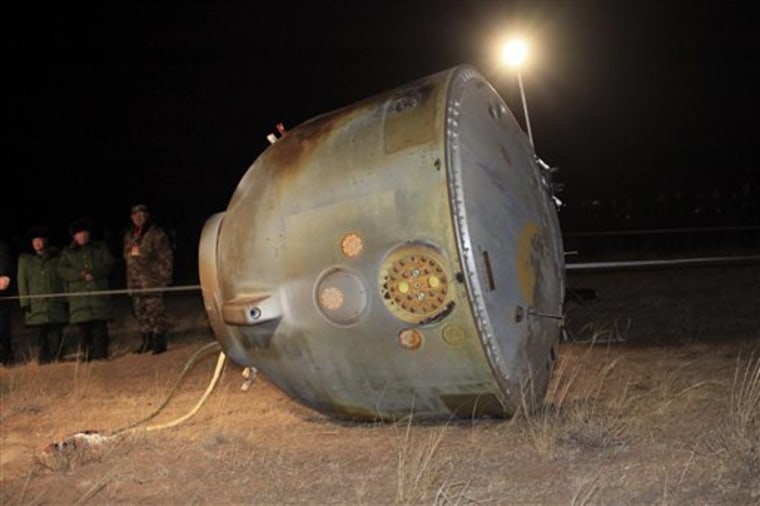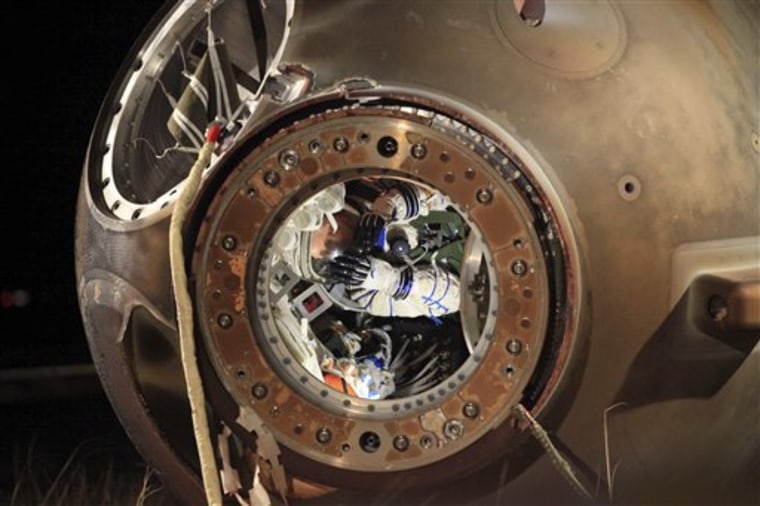An unmanned Chinese spacecraft returned to Earth on Thursday night after it docked twice with an orbiting module in preparation for the country launching its own space station.
The Shenzhou 8 craft landed by parachute in China's western desert after more than two weeks in space. It docked twice with the Tiangong 1 module, which remains in orbit, during a mission proving China capable of successfully docking by remote control. Early U.S. astronauts did so manually.
China will conduct two more space docking missions next year, one of them manned, and plans to complete a manned space station around 2020. At about 60 tons, the Chinese station will be considerably smaller than the 16-nation International Space Station.

China has made steady progress toward a space station since a 2003 launch that made it only the third nation to put a man in space. Two more manned missions have followed, and China separately seeks to launch a lunar rover next year.
China started a space station program after being rebuffed in its attempts to join the ISS, largely on objections from the United States. The U.S. is wary of the Chinese program's military links and the sharing of technology with its chief economic and political rival.
However, China has refused to rule out future cooperation with the U.S. or European space programs and says its craft could dock with the ISS and U.S. spacecraft with only minor adjustments.
It also said that China allowed Germany to conduct biological experiments in a docking vehicle — the first instance of international cooperation since the beginning of China's manned space program.
